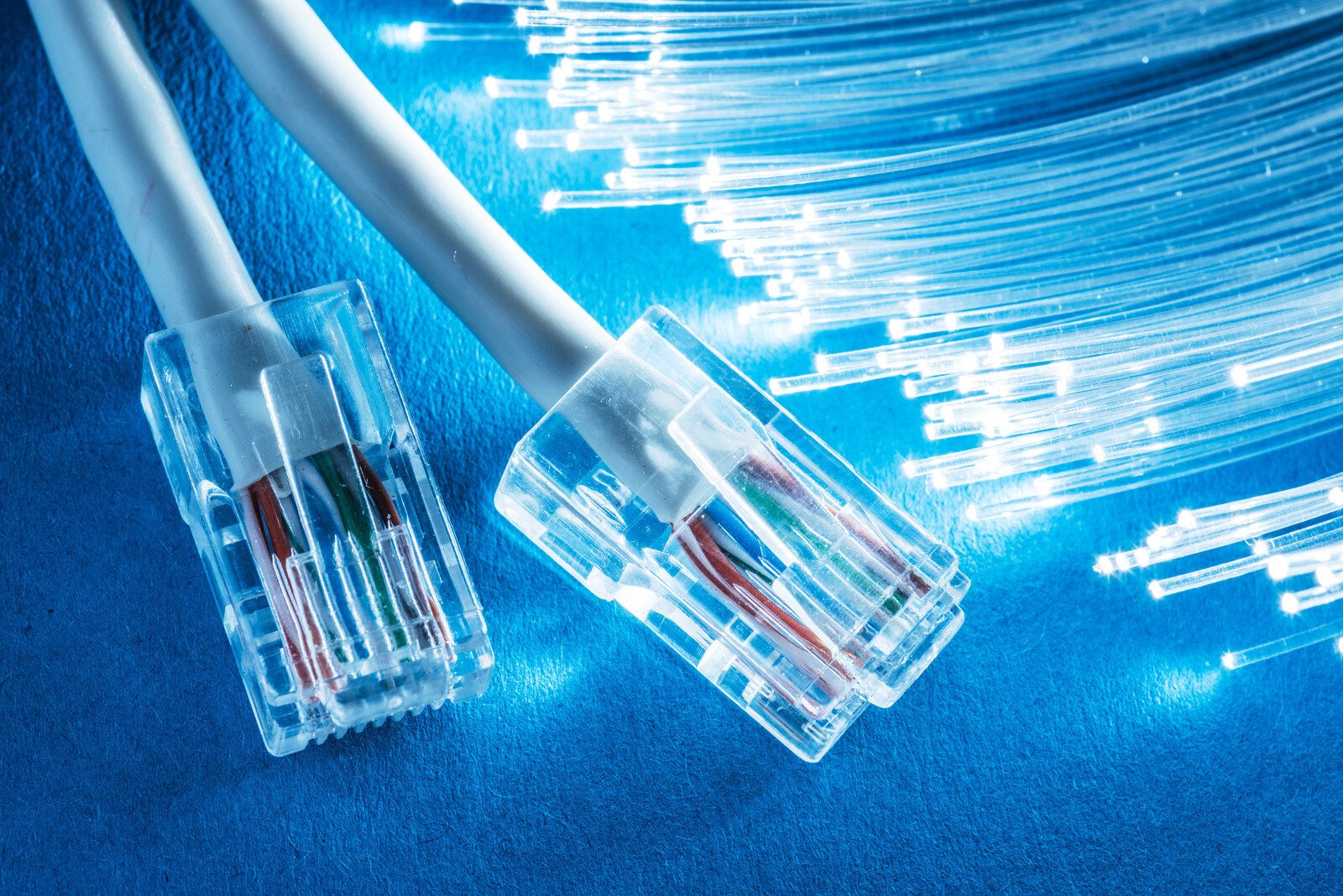Fiber internet has transformed how businesses connect by offering lightning-fast speeds and rock-solid reliability. But if you’re switching to fiber internet or considering an upgrade, you might be wondering: does fiber internet need a modem?
Great question. Understanding what equipment you’ll need for fiber internet can help you make smarter connectivity choices for your business. Read on to learn how fiber networks work and what tools you'll need to set your business up for success.
What Does a Modem Do?
Let’s unpack what a modem actually does. A modem (short for modulator-demodulator) acts as a translator between your internet service provider (ISP) and your internal network. Traditional modems convert incoming signals – whether they’re delivered over DSL, cable, or another medium – into data your devices can understand.
Different internet connections rely on specific modem types, such as:
- Cable modems, which deliver broadband signals via coaxial cables.
- DSL modems, which work with internet delivered over phone lines.
- Satellite modems, which translate signals sent down from satellites.
These modems play an important role in converting signals for traditional internet connections. However, fiber internet operates on an entirely different playing field.

How Does Fiber Internet Work?
Fiber internet uses ultra-thin strands of glass or plastic to transmit data as light signals – a stark contrast to the electrical signals used in traditional copper-based connections. This technology doesn’t rely on the same type of modulation and demodulation as DSL or cable connections, which is why fiber can deliver faster speeds, higher bandwidth, and lower latency.
Instead of a traditional modem, fiber internet uses an Optical Network Terminal (ONT). This device connects your business to your fiber ISP by converting the signals sent over fiber optic cables into electronic data your network devices can actually use.
Do You Need a Modem for Fiber Internet?
The short answer is no – fiber internet doesn’t need a modem. Your ONT handles signal conversion, eliminating the need for a traditional modem altogether.
Think of the ONT as a high-tech bridge between your ISP and your internal network – but engineered specifically for fiber's unique data transmission method. Because of this, using a traditional modem with a fiber connection simply won’t work.

Fiber's ONT approach offers several advantages for businesses over traditional modems, such as:
- Simplified Setup: Fewer devices mean less complexity and easier management when setting up network equipment.
- Higher Speeds: ONTs are designed to handle the high speeds provided by fiber internet, so you get the performance you’re paying for.
- Lower Latency: Since fiber doesn't rely on copper cables or modems, it delivers the low latency needed for real-time applications like video conferencing and VoIP.
Ultimately, taking traditional modems out of the picture lets fiber internet streamline your network infrastructure while delivering better performance.
What About a Router?
While fiber internet doesn’t require a modem, you still need a router to distribute the connection across your network. Your router works hand-in-hand with the ONT, taking the internet signal and spreading it wirelessly or through Ethernet cables to all your connected devices.
Fiber Router vs. Standard Router
Many business owners wonder if they need a specialized router for fiber internet. In most cases, a high-quality standard router will work fine, provided it can handle the speeds your fiber connection delivers. Some ISPs even provide fiber-specific routers or gateway devices, which combine router and ONT functionality, to simplify the setup.

Tips for Choosing the Right Fiber Router
While your ISP will provide your ONT, choosing the right router is your responsibility. For businesses, investing in a router that can handle your fiber internet speed and offer advanced features to support your operations is a must. Key considerations include:
- Gigabit Support: Choose a router capable of supporting gigabit speeds to fully leverage your fiber connection.
- Dual-Band or Tri-Band WiFi: Look for routers that offer multiple frequency bands to reduce interference and improve performance.
- Quality of Service (QoS): QoS features let you prioritize critical traffic like video conferences or cloud applications.
- Advanced Security: Routers with built-in firewalls, VPN support, and other features can help protect your network.
When shopping for routers, keep in mind that while a feature-rich router may cost more now, it’ll pay dividends in performance, security, and scalability.
Setting up Fiber Internet for Your Business
Here’s a quick guide to setting up fiber internet up and running:
1. Install the ONT
Your ISP will typically install the ONT at your premises by connecting it directly to the fiber optic cable. This isn't a DIY job – the precision required means you'll want expert hands to ensure a perfect connection.

2. Connect the Router
Once the ONT is in place, you’ll need to link your router to it using an Ethernet cable. This allows the router to distribute the internet connection to your network.
3. Configure Your Network
Set up your router with your ISP's specific settings, which might involve username/password configuration or enabling features like VLAN tagging. This step is also when you’ll set up guest networks if needed.
4. Optimize Your Router Placement
Position your router centrally, away from potential signal-disrupting obstacles like thick walls or electronic interference. Aim to minimize distance from primary work areas, so consider using multiple access points if your office space is larger.
5. Test Your Connection
Once everything is set up, test your connection to make sure you’re getting the speeds and performance promised by your ISP. Be sure to perform tests at different times of the day and on different devices, and use multiple speed test websites for comprehensive results.
Fatbeam: Better Fiber Internet for Modern Businesses
Understanding the equipment needed for fiber is essential for making the most of this connectivity solution for your businesses. Luckily, you don’t have to be an expert in fiber networks to get started with high-speed, reliable internet.
At Fatbeam, we leverage our leading-class fiber optic backbone network to provide businesses with fast and uninterrupted connectivity. Our commercial internet solutions come with stringent performance SLAs, burstable bandwidth, symmetrical speeds, and more – all for one fair, fixed price. Plus, with our top-tier customer support, you can rest easier knowing we’re here to help any time you need us.
Ready to upgrade your business to fiber? Contact the Fatbeam Fiber team today to learn how we can help.


